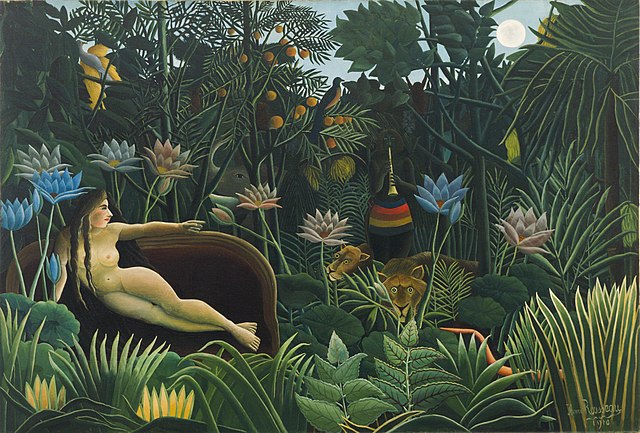Henri Rousseau
French painter (1844–1910) From Wikipedia, the free encyclopedia
Remove ads
Henri Julien Félix Rousseau (French: [ɑ̃ʁi ʒyljɛ̃ feliks ʁuso]; 21 May 1844 – 2 September 1910)[1] was a post-Impressionist painter. He was born at Laval, Mayenne. He worked a variety of jobs (saxophonist, toll collector) before beginning to paint at age 40. He was known as Le Douanier ("the customs officer").


From 1886 onwards, he exhibited at the Salon des Indépendents. In 1905, he began exhibiting at the Salon d'Automne.
François Mathey wrote: "Rousseau is considered to be the greatest master of naïve painting, for his art combines a spontaneous vision of reality with an imaginary universe of great plastic and poetical power, in which he allied audacity with innocence, monumental composition with minute detail".[2]
Some critics ridiculed him for his style, but he came to be recognized as a self-taught genius.[3][4] Rousseau's work had a great influence on many avant-garde artists.[5]
He had an unhappy love affair in his last months. He died in Paris in 1910.[2]
He painted a few pictures of the Rainforests, and his pictures were very busy.some of His paintings are very famous around the world.
Legacy: The Flamingoes (painting) was sold for (c. $43 million, or) $43.5 million, in 2023.[6]
Remove ads
Gallery
- Sleeping Gypsy, 1897
- Three Apes In The Orange Grove, 1907c
- The Football Players, 1908
References
Wikiwand - on
Seamless Wikipedia browsing. On steroids.
Remove ads



